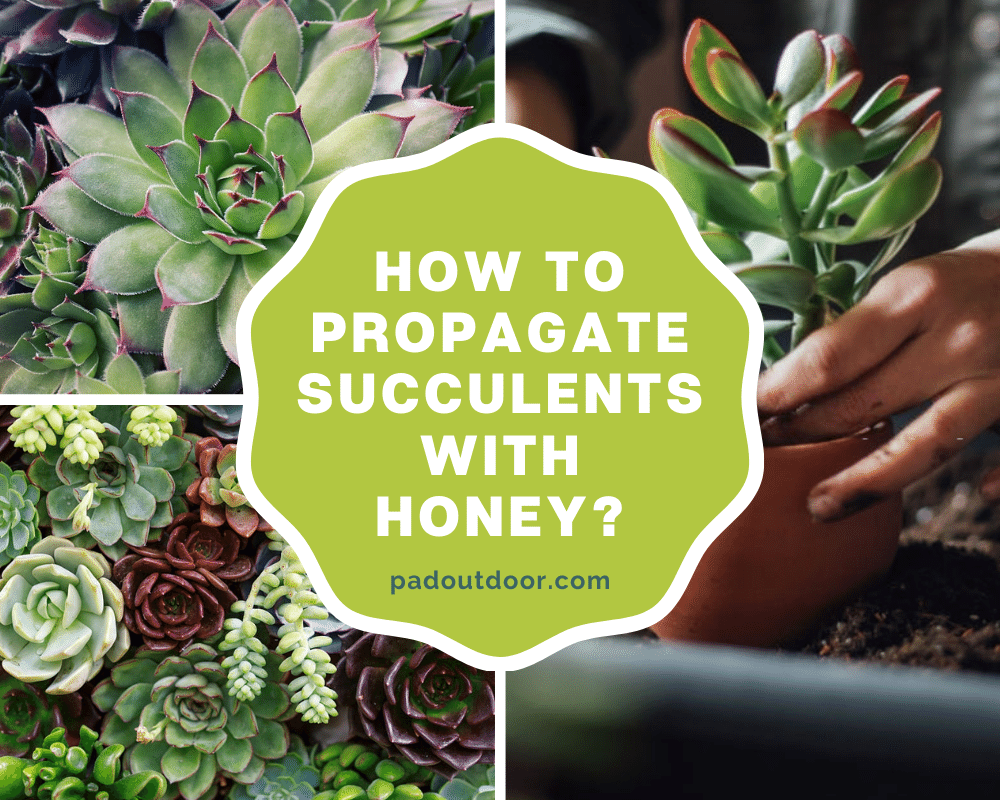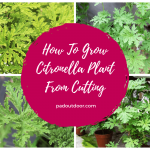Looking for natural ways to propagate your succulents? We give you the 4 easy steps on how to propagate succulents with honey. Find out more!

If you have a hard time propagating your succulent plants and nothing seems to be making the process successful, then it’s time to use a rooting hormone.
In this particular content, we will share with you one of the most effective natural rooting hormones for succulents – the honey.
Read one and learn the steps on how to propagate succulents with honey:
Contents
Is Honey Effective As A Rooting Hormone?
Absolutely! Honey is an excellent rooting stimulate. The reason for this is the fact that honey contains natural antiseptic and anti-fungal properties.
Because of these properties, the fresh cuttings of the plants are well-protected from pathogens. Therefore, the cuttings will naturally root.
Although honey is a great rooting hormone for succulent plants, other growers choose not to use it because it takes quite some time for the roots to show. However, the success rates are high and the roots are definitely healthy.
Basically, honey is a top choice as a succulent propagator due to the following:
- Honey is universally known as organic;
- It is cheaper as compared to the synthetic rooting hormones from the leading brands; and
- Honey is readily available in almost all supermarkets and even online.
How To Propagate Succulent With Honey
Convinced that honey is an effective rooting stimulate for your plants?
Now, it’s time to get familiar with the steps:
1. Prepare The Cuttings
The most important thing to remember in this stage is to choose a healthy succulent as your mother plant. Pick the one with lush green leaves and rounded form. These are good indicators that the plant is healthy and ready to be cloned.
There are two parts where you can get your cuttings from, either the leaves or the stems (the former being the popular choice). When taking the leaves as cuttings, you can simply use your hands and pluck a leaf out. However, make sure you don’t damage the leaf and it should come out cleanly from the plant’s stem.
On the other hand, if you choose to use the stem, then it is recommended to have the right scissors. Also, make sure that the pair of scissors is clean and sterilized. The popular part to cut the stem from is just above the leaf node. You can also choose to cut the stem that you think is an extra or the odd one in the mother plant.
2. Let The Cuttings Dried Out And Callused
This next step is a bit crucial as this when the cuttings are susceptible to infections. For this reason, we cannot place the cuttings directly to the soil. The wound from the cuttings is still fresh, thus making it vulnerable to fungi and bacteria.
The best way to combat this is to let the leaves dry out first. Just let the cuttings be in an open space in which the amount of sunlight is just enough for the wound to dry out.
Once the cuts are starting to get a callus and small, thin roots start to show, this is when you can start preparing the pot where you get to transfer the cuttings.
3. Dip Them In Honey
When the potting soil mix is ready, there is just one step you need to do. That is to dip the succulent cuttings in honey. Just let a thin layer of honey cover the roots of the cuttings.
The thin coating will serve as the protection of the roots before you introduce them to the soil mix. Take note not to bury the succulent cuttings into the soil. You can just lay them on top of the soil and wait.
4. Mist It Just Right
It is not recommended to water the cuttings a lot. Misting the cuttings and the soil with fresh water regularly is enough. Continue to mist the soil as you wait for the roots to be fully developed.
Conclusion
More or less, you need to wait around a month or two before you can see your successful propagation. If you really want to clone succulents, then using a natural root hormone is undoubtedly the better choice.
Hopefully, you find these tips on how to propagate succulents with honey useful. Thanks for reading!
Recommended Reading:







